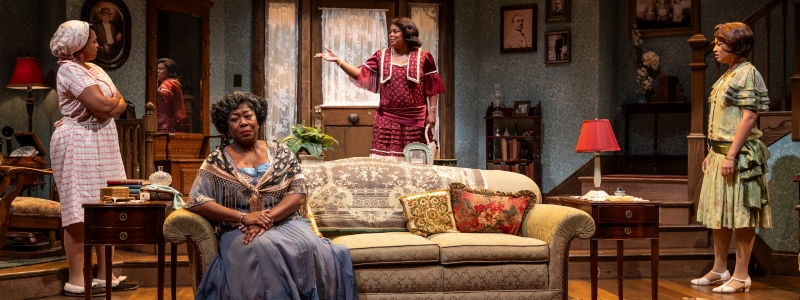Pre-Show Classroom Activity

Invite students to consider how the roots of their circumstances have led to their personalities, interests, and ideals as they reflect on Big White Fog.
As always, please note that some steps of the activity may be condensed, eliminated, or extended based on the needs of your classroom.
Tracing Your Roots
Activity Preparation
- Supplies:
- Set-Up:
- As desired, consider completing a handout of your own to serve as an additional model for students.
This activity will take approximately 50-60 minutes.
Learning Sequence
- Explain that Big White Fog takes place between 1922 and 1932, during the Great Depression. This also coincided with a period of frequent, brutal massacres of Black communities (such as in Tulsa, East St. Louis, and Washington — all of which are mentioned in the play). Ask students to share any ways they think, or know, Black communities fought against their circumstances during this time. (~5 minutes)
- Ask students if anyone is familiar with Marcus Garvey or the Back to Africa movement. Show this brief video about Marcus Garvey. (~5 minutes)
- Note that the Back to Africa movement was one of many tactics that Black Americans were building to pursue safety in the face of oppression and violence. Ask students if they know the basic tenets of communism. If students are unfamiliar, show this video. Reiterate that the Back to Africa movement and communism are different responses/potential solutions to impossible circumstances. (~10 minutes)
- Note that in Big White Fog, certain characters gravitate towards these (and other) ideologies amidst their struggles. These characters’ circumstances, values, personalities, and perspectives all influence who they are.
- Distribute the Tracing Your Roots handout and direct students to the example on the back, which is for one of the characters from Big White Fog. Explain that this is a diagram showing how circumstances (roots) lead to personhood (trunk) and ideals (branches) through the metaphor of a tree. (~2 minutes)
- Have students examine the roots of Lester’s tree, which read Chicago, Black, lower middle class, educated, eldest of four, oldest son. Note that these characteristics are ones that Lester was born into or raised with, and note that this character is just out of high school. (~1 minute)
- Then, draw students’ attention to the trunk of the tree, which reads confident, driven, friendly, and aspirational. Note that these show who Lester is and what his personality is like. Ask: How might the roots of the tree have led to these particular adjectives for this character? (~6 minutes)
- Draw students’ attention to the branches, which read “Break racial boundaries with education” and “A more equitable society through communism.” Ask: How might the roots of the tree have led to these ideals for Les? (~4 minutes)
- Direct students to the front page of the handout and point out the instructions at the top. Prompt them to brainstorm and create their own individual roots, trunk, and branches. (~10 minutes)
- Invite students to share with a partner, a small group, or the whole class. Encourage them to trace how circumstances or situations have led to personality traits and ideals. (~10-20 minutes)
- This activity aligns with the following standards:
- Illinois Arts Learning Standards
- Anchor Standard 11: Relate artistic ideas and works with societal, cultural, and historical context to deepen understanding.
- Common Core State Standards
- CCSS.ELA.RL.3 Analyze how and why individuals, events, and ideas develop and interact over the course of a text.
- CCSS.ELA.RI7 Integrate and evaluate content presented in diverse formats and media, including visually and quantitatively, as well as in words.
- Illinois Arts Learning Standards